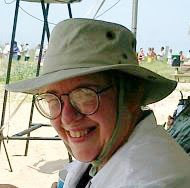We awakened this morning to no (oil) heat. The tank was topped off recently so there was fuel, and we got the fuel mix that is designed to help prevent the "jelling" issue (diesel fuel and fuel oil has a tendency to begin to solidify at colder temps) but as they said, it is not guaranteed.
Our tank is covered (with a little shed that is not even close to air-tight but cannot be opened -- perhaps you remember talk of this, this past fall when we got our first oil fill up and disturbed the wasps that reside inside there) but the filter area is no longer insulated.
We thought that might be the issue, so K went out with the heat gun (the extreme temps proved too much for the trusty hair dryer, which was only blowing cold air) but that did not do the trick.
I went to the store and bought a jug of the stuff they sell for keeping diesel truck fuel tanks running, but instead of adding that, we decided to call the fuel company for a service call.
I am glad we did, as it only cost $90 and we learned a lot from the service guy.
1. Putting the tank on the south side of the house wouldn't help... ice still accumulates on the inside of the tanks above the fuel line overnight and when it melts as the sun hits it, it will go to the bottom of the tank and into the feed line. Water, of course, will not burn.
2. There is stuff called "Hot" that appears to work for fuel oil like the Heet we put in our cars' fuel tanks in the winter. The tech recommended it at least once a year as standard procedure.
3. We will likely consider using the Hot as an additive with each fill up, in the future.
4. When we rebuild the enclosure around the oil tank, we will do it in such a way as to seal it against insects, add insulation, make it easy to open in order to access the filter mechanism as well as for inspection of the tank. We will also make it possible to insert and plug in a shop light for heat during future winters of extreme cold.
We also learned that one can install a horizontal oil tank over a bed of crushed rock and 4" thick patio pavers, but that a vertical one must be installed on a cement slab to be legal here, and that any oil tank that is installed on the side of a building with eaves must be covered OR be 2' out from the drip line. Installations on the end of a building (where there are no eaves) require no setback.
On other fronts, I am thankful for the propane and kerosene auxiliary heaters, and am still thinking of adding "zoned heating" by way of permanent propane heaters in the master bed/bath area, living room and possibly office.
And (thanks -- I think -- to the 500 watt shop light under the uninsulated part of the floor, and leaving the faucets dripping) all of the water still works.
I have fresh vegetable soup in the crock pot, some of which will go to work with me tonight, and the kitchen floor has been swept.
Haven't got a lick of other work done today, but sometimes that's the way of it when you live in an area of extreme weather and are just learning the ropes.

No comments:
Post a Comment